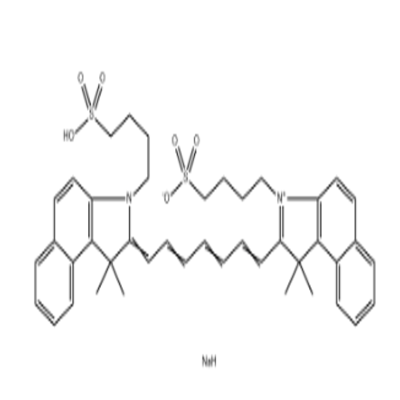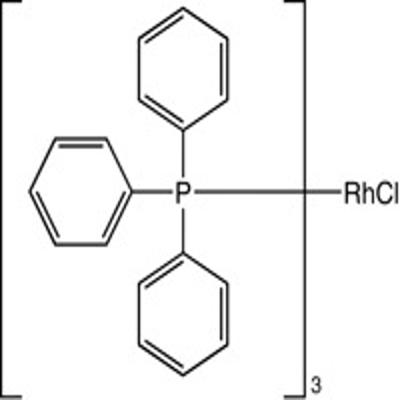-
Categories
-
Pharmaceutical Intermediates
-
Active Pharmaceutical Ingredients
-
Food Additives
- Industrial Coatings
- Agrochemicals
- Dyes and Pigments
- Surfactant
- Flavors and Fragrances
- Chemical Reagents
- Catalyst and Auxiliary
- Natural Products
- Inorganic Chemistry
-
Organic Chemistry
-
Biochemical Engineering
- Analytical Chemistry
- Cosmetic Ingredient
-
Pharmaceutical Intermediates
Promotion
ECHEMI Mall
Wholesale
Weekly Price
Exhibition
News
-
Trade Service
Recently, Stem Cells Transl Med published the results of a Phase I/II clinical trial related to the treatment of urinary incontinence by introtopic stem cells.
This is a forward-looking, non-randomized clinical trial of stage I/II urinary incontinence, which included 9 male patients (8 treated) and 10 female patients who received urethra injections of self-filled stem cells, and there has been a significant improvement in urinary incontinence symptoms in several patients.
stress urinary incontinence: reduced quality of life Urinary incontinence refers to the involuntary flow of urine from the urethra, is a common health condition that may reduce the quality of life.
stress urinary incontinence is a common urinary disease in adult women.
one in three women has varying degrees of urinary incontinence, of which more than half are stressed urinary incontinence, but only 25 per cent seek or receive treatment.
stress urinary incontinence in women is an involuntary urinary leak that increases abdominal pressure due to effort or effort or sneezing or coughing that causes the bladder not to contract.
the most important pathophysiological factors in women are the presence of sphides dysfunction in the urethra in such patients, nerve damage in the pelvic floor muscle group caused by childbirth and sphides dysfunction in the urethra, and their biological function is difficult to restore.
For men, the incidence rate of youth is about 4.8%, the incidence rate of middle-aged men is about 11%, the incidence rate of older men over 65 years of age is about 21%, so the incidence rate of male patients is lower than that of women, urgent urinary incontinence is the most common type of urinary incontinence in men.
-cured prostatectomy is the most common cause of stressful urinary incontinence in men.
Prostate cancer is one of the most common cancers in men, with a 5% to 60% incidence of urinary incontinence after a cured prostatectomy, and only 0.5% to 2% of male patients develop urinary incontinence after benign prostate hyperplurigia surgery.
Traditional treatment methods can not meet the needs of female urinary incontinence patients drug treatment effect is not good, the current suspension of the treatment of female pressure urinary incontinence is more mature, minimally invasive and simple, the efficacy is accurate, but there may be complications or disease recurrence, because sling materials can lead to such as urination difficulties, urinary tract syndrome and other symptoms as well as sling erosion, chronic inflammation around the urethra and other complications and long-term observation found clinical cure low.
Injection fillers around the urethra, such as bovine collagen, short-term clinical cure rate of 66% to 79.3%, injection filler treatment after about 2 years of clinical efficacy is not ideal, and injection filler materials may lead to urethra around abscesses, urinary dysfunction and pulmonary embolism and other complications, the cost is more expensive, clinically difficult to widely apply.
because the above-mentioned different treatment methods have obvious shortcomings, looking for a non-invasive, simple operation, safe use, less complications of treatment measures, is the future treatment of female urinary incontinence development direction.
stem cells to provide new ideas Stem cells are the focus of clinical research in recent years, some scholars have tried to use it to treat urinary incontinence, through the urethra around the injection of stem cells, such as bone marrow-sourced stem cells, muscle-sourced stem cells and fat-sourced stem cells.
Stem cells can differentiate into smooth muscle cells, improve the function of urethra sphides, and promote nerve cell regeneration, injected stem cells can also secrete a variety of factors, promote urethra tissue regeneration, a variety of mechanisms to restore the physiological urinary flow control ability of the urethra.
data also showed that injection of stem cells around the urethra under ultrasound guidance significantly improved the prognostication of patients with urinary incontinence and improved urination.
clinical trials related to stem cell therapy for urinary incontinence are currently registered on the website of clinical centertrials.gov, and there is still a lot of room for research in the future.
As early as 2009, scholars reported 29 cases of female urinary incontinence treated with injectable stem cells, injection therapy around the lower urethra guided by urethra, 11 cases of urinary leakage improved significantly after 3 months of follow-up, 13 cases of urinary leakage and urinary urgency decreased significantly in 1 year, and 4 patients achieved complete urine control, and no obvious complications occurred.
that stem cell injections are safe to treat urinary incontinence in women.
Boa Stem Cells also carried out clinical research on stem cell therapy for stress urinary incontinence in cooperation with Sanjia Hospital, and achieved initial results, improving the body movement function and vaginal front wall pressure in some patients.
urinary incontinence is common in people, and although there are many effective treatment options, few seek treatment.
clinicians should give priority to examining urinary incontinence, identifying and treating changeable factors, and incorporating patient preferences into assessment and treatment.
For example, unservised pelvic muscle exercises can be performed first, and lifestyle adjustments can be made according to the patient's condition to reduce symptoms, weight loss, adequate drinking water, regular urination to reduce the onset of acute urinary incontinence, followed by conservative treatment and medication, when potential pathological or conservative treatment is found to be ineffective, timely specialist treatment should be carried out.
there is still a lot of room for clinical treatment of urinary incontinence, and stem cells as a new technology, but also for the treatment of urinary incontinence provides a new way of thinking, the future prospects are promising.
references: 1. Garcia-Arranz M, Alonso-Gregorio S, Fontana-Portella P, Bravo E, Diez Sebastian J, Fernandez-Santos ME, Garcia-Olmo D (2020) Two phase I/II clinical trials for the treatment of the treatment of urinary incontinence with autologous mesenchymal stem cells. Stem Cells Transl Med. doi:10.1002/sctm.19-04312. Lukacz ES, Santiago-Lastra Y, Albo ME, Brubaker L (2017) Urinary Incontinence in Women: A Review. JAMA 318 (16): 1592-1604.3. Capobianco G, Madonia M, Morelli S, Dessole F, De Vita D, Cherchi PL, Dessole S (2018) Management of female stress urinary incontinence: A care pathway and update. Maturitas 109:32-38. doi: 10.1016/j.maturitas.2017.12.0084. Yamamoto T, Gotoh M, Hattori R, Toriyama K, Kamei Y, Iwaguro H, Matsukawa Y, Funahashi Y (2010) Periurethral injection of autologous adipose-derived stemd cells for the treatment of the treatment of the stress urinary incontinence in the students' radicals. Int J Urol 17 (1):75-82. doi:10.1111/j.1442-2042.2009.02429.x5. Deng K, Lin DL, Hanzlicek B, Balog B, Penn MS, Kiedrowski MJ, Hu Z, Ye Z, Zhu H, Damaser MS (2015) Mesenchymal stem cells and their secretome partially restore and urethral function in a dual muscle and nerve injury reserin incontinence model. Am J Physiol Renal Physiol 308 (2): F92-F100. doi: 10.1152/ajprenal.00510.20146. Bardsley A (2016) An overview of urinary incontinence. Br J Nurs 25 (18): S14-S21. doi:10.12968/bjon.2016.25.18.S14.







